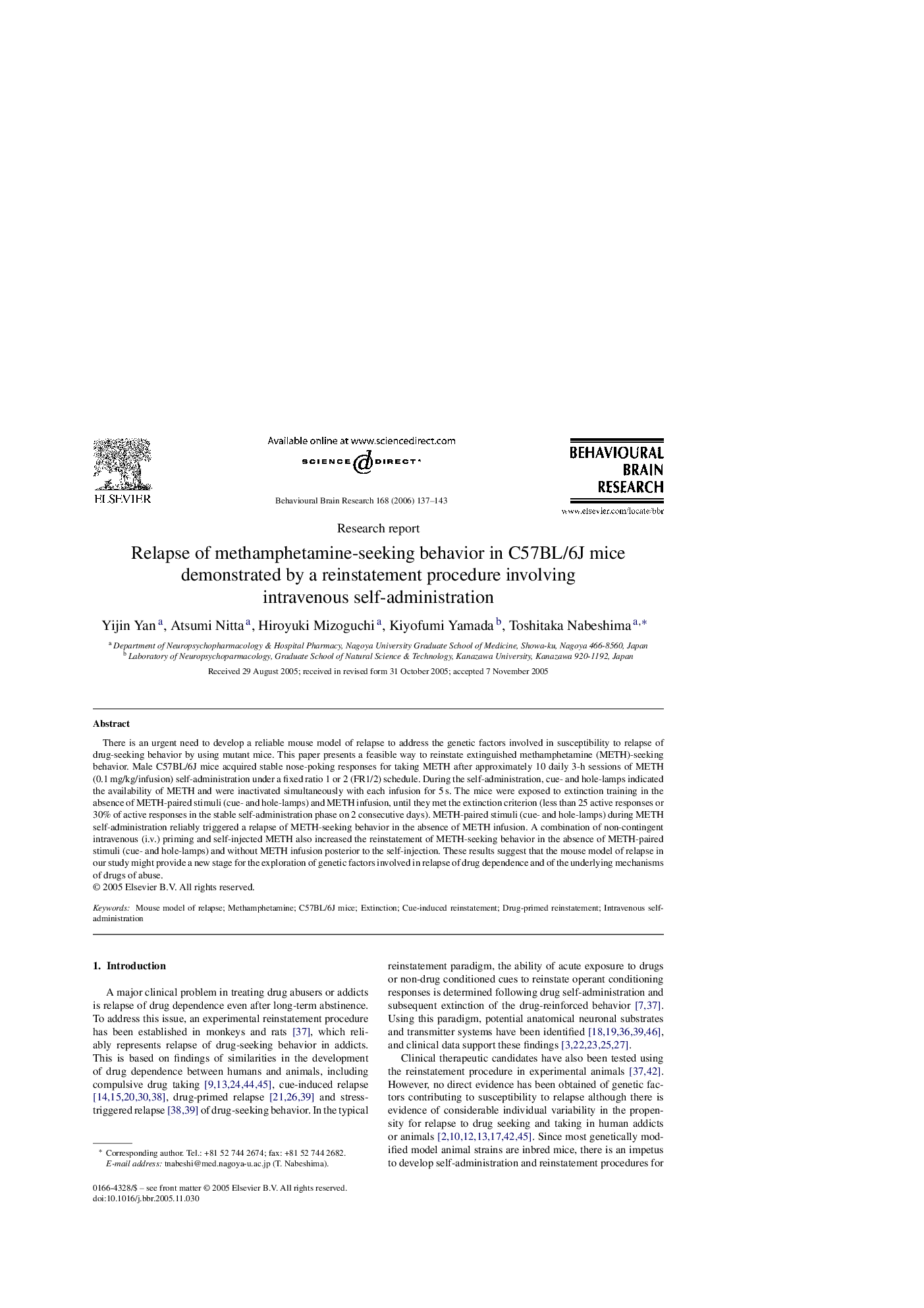| Article ID | Journal | Published Year | Pages | File Type |
|---|---|---|---|---|
| 4316152 | Behavioural Brain Research | 2006 | 7 Pages |
There is an urgent need to develop a reliable mouse model of relapse to address the genetic factors involved in susceptibility to relapse of drug-seeking behavior by using mutant mice. This paper presents a feasible way to reinstate extinguished methamphetamine (METH)-seeking behavior. Male C57BL/6J mice acquired stable nose-poking responses for taking METH after approximately 10 daily 3-h sessions of METH (0.1 mg/kg/infusion) self-administration under a fixed ratio 1 or 2 (FR1/2) schedule. During the self-administration, cue- and hole-lamps indicated the availability of METH and were inactivated simultaneously with each infusion for 5 s. The mice were exposed to extinction training in the absence of METH-paired stimuli (cue- and hole-lamps) and METH infusion, until they met the extinction criterion (less than 25 active responses or 30% of active responses in the stable self-administration phase on 2 consecutive days). METH-paired stimuli (cue- and hole-lamps) during METH self-administration reliably triggered a relapse of METH-seeking behavior in the absence of METH infusion. A combination of non-contingent intravenous (i.v.) priming and self-injected METH also increased the reinstatement of METH-seeking behavior in the absence of METH-paired stimuli (cue- and hole-lamps) and without METH infusion posterior to the self-injection. These results suggest that the mouse model of relapse in our study might provide a new stage for the exploration of genetic factors involved in relapse of drug dependence and of the underlying mechanisms of drugs of abuse.
